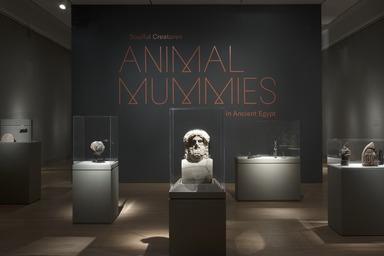

Soulful Creatures: Animal Mummies in Ancient Egypt, September 29, 2017 through January 21, 2018 (Image: DIG_E_2017_Soulful_Creatures_01_PS11.jpg Brooklyn Museum photograph, 2017)

Soulful Creatures: Animal Mummies in Ancient Egypt, September 29, 2017 through January 21, 2018 (Image: DIG_E_2017_Soulful_Creatures_02_PS11.jpg Brooklyn Museum photograph, 2017)
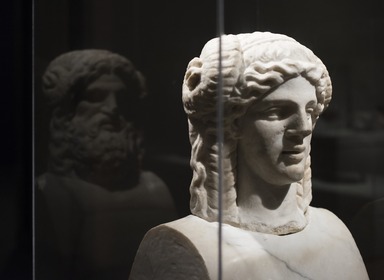
Soulful Creatures: Animal Mummies in Ancient Egypt, September 29, 2017 through January 21, 2018 (Image: DIG_E_2017_Soulful_Creatures_03_PS11.jpg Brooklyn Museum photograph, 2017)
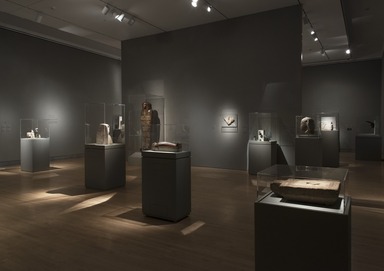
Soulful Creatures: Animal Mummies in Ancient Egypt, September 29, 2017 through January 21, 2018 (Image: DIG_E_2017_Soulful_Creatures_04_PS11.jpg Brooklyn Museum photograph, 2017)

Soulful Creatures: Animal Mummies in Ancient Egypt, September 29, 2017 through January 21, 2018 (Image: DIG_E_2017_Soulful_Creatures_05_PS11.jpg Brooklyn Museum photograph, 2017)
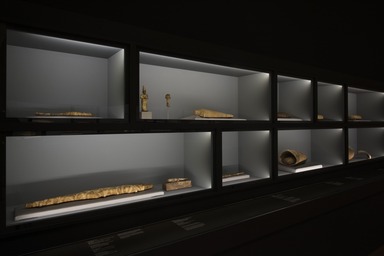
Soulful Creatures: Animal Mummies in Ancient Egypt, September 29, 2017 through January 21, 2018 (Image: DIG_E_2017_Soulful_Creatures_06_PS11.jpg Brooklyn Museum photograph, 2017)
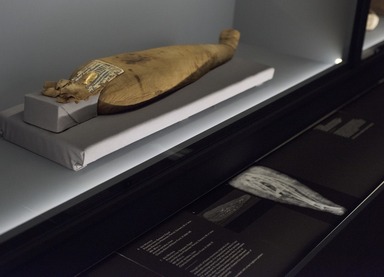
Soulful Creatures: Animal Mummies in Ancient Egypt, September 29, 2017 through January 21, 2018 (Image: DIG_E_2017_Soulful_Creatures_07_PS11.jpg Brooklyn Museum photograph, 2017)
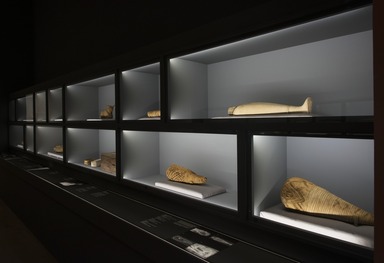
Soulful Creatures: Animal Mummies in Ancient Egypt, September 29, 2017 through January 21, 2018 (Image: DIG_E_2017_Soulful_Creatures_08_PS11.jpg Brooklyn Museum photograph, 2017)

Soulful Creatures: Animal Mummies in Ancient Egypt, September 29, 2017 through January 21, 2018 (Image: DIG_E_2017_Soulful_Creatures_09_PS11.jpg Brooklyn Museum photograph, 2017)

Soulful Creatures: Animal Mummies in Ancient Egypt, September 29, 2017 through January 21, 2018 (Image: DIG_E_2017_Soulful_Creatures_10_PS11.jpg Brooklyn Museum photograph, 2017)
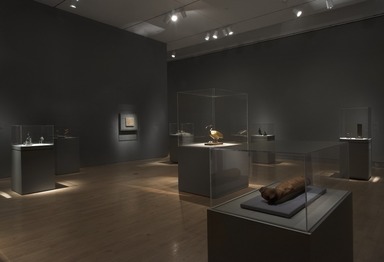
Soulful Creatures: Animal Mummies in Ancient Egypt, September 29, 2017 through January 21, 2018 (Image: DIG_E_2017_Soulful_Creatures_11_PS11.jpg Brooklyn Museum photograph, 2017)
Soulful Creatures: Animal Mummies in Ancient Egypt
-
Animals in Ancient Egyptian Culture
Animals were integral to ancient Egyptian life, whether as beasts of burden, food sources, pets, or feared wild predators of the desert or marshes. As a result, they were ever-present in Egyptian religious, political, and artistic symbolism for over four thousand years. Individual species came to symbolize specific traits in gods or humans, such as the power of the lion, and seemed to embody both the dangerous and the beneficial forces of nature. Carrying this weight of meaning, animal images could be used in writing, magic, or healing. And the bodies of animals, mummified after death, could serve religious purposes.
Though foreign contemporaries admired Egyptian culture in general, nonetheless, Hebrew, Greek, Roman, and early Christian writings condemned and ridiculed the Egyptian view of animals. But today, modern scholars have found that the Egyptian attitude toward the animal world was in fact more complex and nuanced than their neighbors acknowledged, as the objects shown in this section of the exhibition demonstrate. -
Making Votive Mummies
Votive animal mummies were made not only from domesticated animals, such as cats and dogs, but also from wild animals, including crocodiles, snakes, and birds. Some animals were specifically raised for mummification in temples. Royal regulations concerning these votive mummies specified that one body per package was ideal. However, there are sometimes multiple animals, parts of animals, or no animal at all in the package.
The corpse was dried using natron, a naturally occurring salt, and wrapped in linen. Priests could deposit the linen bundle directly in niches carved into the cemetery’s limestone walls, or they could place it first in a coffin. The coffin could resemble the shape of the animal or assume other symbolic shapes, such as an obelisk or cartouche. Coffins of pottery, wood, or bronze added to the economic value, and perhaps to the efficacy, of the mummy. -
Votive Animal Mummies: Messengers to the Gods
In Egyptian religion, many species of animals each had a relationship with one or more deities. This relationship allowed the soul of the animal, upon release from the earthly body, to act as a messenger sent by a human to a god. These messages could be written on papyrus or linen, recited orally, or perhaps a combination of the two.
Complaints are the most common features of letters addressed to the gods. Writers complain about a variety of subjects, most often a crime committed against him or her. But the complaint can also address sickness, a deplorable state of affairs at work, an injustice within a family, perjury in court, or libel against the writer. In redress of their grievances, worshippers therefore ask the god to intervene and provide long life, improved health, better working conditions, enriched relations with parents, swift return of stolen goods, and immediate protection from evil spirits. Clearly, they expected to see results. -
Soulful Creatures: Animal Mummies in Ancient Egypt
In the ancient burial ground at Saqqara, Egypt, one animal cemetery alone has yielded over four million individual ibis mummies. And the nearby dog cemetery contained over seven million mummies, while additional sites throughout Egypt held the remains of countless cats, snakes, and various other creatures. This unusual aspect of ancient Egyptian culture and religion—the mummification of animals—has remained largely a mystery. This exhibition explores the religious purpose of these mummies, how they were made, and why there are so many.
Animals were central to the ancient Egyptian worldview. In a rarity among ancient cultures, Egyptians believed that animals possessed souls. Since most species were thought to have a connection to a particular deity, after death the soul of a mummified animal could carry an individual’s message to a god.
Yet not all animal mummies are what they seem. Scientific investigation proves that the corrupt burial practices alleged by some ancient texts were all too real. CT scans displayed in the exhibition uncover the empty wrappings, double mummies, and misleading packaging among the mummies that some priests sold to worshippers perhaps for profit.
Drawn entirely from the Brooklyn Museum’s renowned collection, Soulful Creatures combines the tools of art history, archaeology, and forensic science to reveal the religion, commerce, and biology of animal mummies. -
Types of Animal Mummies
The Egyptians preserved animals as mummies for several different purposes.
Rarely, mummies of pets were buried with their owners; the best-known examples are from within the royal family. More commonly, mummified farm or game animals served as food offerings for the deceased and were included in tombs. Also, particular sacred animals, which were considered a god incarnate, were mummified at death and buried much like royalty. The vast majority of animal mummies, however, were votive: animals prepared for burial so that their souls would be set free to deliver messages to the gods. -
Kings and Mummies
The king and queen sponsored cults of sacred animals as one of their basic royal responsibilities and ensured that a divine animal was mummified.
The royal government also undertook to guarantee the integrity of votive mummy manufacture and burial. Royal regulations controlled the large institutions that housed the living animals, converted the slain animals to mummies, and buried them in the large animal cemeteries throughout Egypt. -
Scientific Study of Animal Mummies
In preparing for this exhibition, the Conservation Laboratory at the Brooklyn Museum analyzed a number of the animal mummies to determine their composition, content, and age.
Certain testing methods allowed scientists to see inside the mummies, such as X-radiography and computed tomography (CT), which revealed previously hidden contents and uncovered how the mummies were made. The use of stereomicroscopes and ultraviolet radiation let scientists examine materials on the surface more closely. X-ray diffraction (XRD) and gas chromatography (GC) were employed to identify more accurately the embalming resins and other substances found on the animal mummies. Radiocarbon or carbon 14 dating was done on several samples of the linen wrappings, to compare the physical age of the linen with the supposed age of the mummies.
With these tools, modern scientific testing has refined and enhanced art-historical and archaeological observation and greatly added to our understanding of ancient animal mummies. In certain instances, testing has shown that there are no remains at all within an animal mummy’s wrappings. In other cases, the presence of a different animal from the one advertised, or fragments of several different animals, are now confirmed by scientific methods. For example, of the four ibis-shaped mummies displayed nearby, two contain complete ibis mummies while the third contains snakes and the fourth contains shrews. Though we cannot be sure that this does not have another religious explanation, what we have learned through advanced imaging of these mummies suggests that despite the standard accounting practices established by Egyptian kings, some corrupt priests may have cheated worshippers and the institutions that prepared and buried the animal mummies.
-
April 12, 2017
Soulful Creatures: Animal Mummies in Ancient Egypt, opening September 29, 2017, is the first major exhibition on the topic
Soulful Creatures: Animal Mummies in Ancient Egypt is the first major exhibition to focus on one of the most fascinating and mysterious aspects of ancient Egyptian culture and religion—the mummification of animals. Organized by the Brooklyn Museum and drawn from its renowned Egyptian collection, the exhibition clarifies the role animals, and images of animals, played in the Egyptian natural and supernatural world through 30 mummified birds, cats, dogs, snakes, and other animals and more than 65 objects related to the ritual use of animal mummies. Soulful Creatures is on view from September 29, 2017, through January 21, 2018.
Excavated in the nineteenth and twentieth centuries, from at least thirty-one different cemeteries, the animal mummies on display cover Egyptian history from as early as 3000 B.C.E. until the Roman period at the end of the second century C.E. “While the exact significance of animal mummies has largely remained a mystery, they are the most numerous type of artifact preserved from ancient Egypt,” stated Edward Bleiberg, Senior Curator, Egyptian, Classical, and Ancient Near Eastern Art. “For example, over four million individual ibis mummies have been found at an ancient burial ground in Saqqara, and a nearby dog cemetery yielded over seven million mummies. Soulful Creatures explores the purpose of these mummies, how they were made, and why there are so many.”
The four kinds of animal mummies that ancient Egyptians produced include pet, victual (mummified food placed in the tomb for the afterlife), divine, and votive (sacred offerings that communicated directly with a deity). Animals were central to the ancient Egyptian worldview and most had connections to a particular deity. The ibis and the dog are two sacred votive examples that acted as messengers to the Egyptian gods Thoth and Anubis, respectively. After death, mummified animals served a variety of religious purposes, allowing the animals’ souls to carry messages to the gods. These messages were often sent through accompanying hand written letters that frequently requested good health for a sick relative or help with problems at work. The exhibition even includes an example from a child who complained to a particular god about their parent’s behavior.
“These mummies were made in a carefully controlled process that resembled human mummification. It just shows how Egyptians thought of animals, on some basic level, as being very similar to human beings. They regarded animals as creatures created by the gods and believed they possessed a soul, which was unusual for an ancient culture,” said Bleiberg. One of the most elaborate and expensive animal mummies in the exhibition is the Ibis Mummy from the Early Roman Period. The extraordinary artifact is lavishly wrapped in linen strips that are dyed and woven together to form a herring bone pattern and includes a wooden beak and crown to make the ibis recognizable in its wrappings.
By drawing on archaeology, cultural history, and modern medical imaging—done by the Brooklyn Museum with Dr. Anthony Fischetti of the New York Animal Medical Center—Soulful Creatures also reveals that many animal mummies are not what they seem. Scientific investigation of the mummies produced some surprising results and confirmed corruption in animal cemeteries that some contemporaneous texts allege. CT scans displayed in the exhibition analyze how animal mummies were made and what they contain, uncovering the empty wrappings, double mummies, and misleading packaging among some of the mummies that the priests sold to worshippers. Soulful Creatures illuminates recent scientific tests that have uncovered key information about animal mummification and illustrates how Egyptologists today investigate the many provocative theories proposed—like corruption in animal cemeteries—to explain the practice, origins, techniques, and rituals of animal mummification.
Soulful Creatures: Animal Mummies in Ancient Egypt is organized by Edward Bleiberg, Senior Curator, Egyptian, Classical, and Ancient Near Eastern Art, and Yekaterina Barbash, Associate Curator of Egyptian Art, Brooklyn Museum. The accompanying book is published by the Brooklyn Museum in association with D. Giles Ltd, London.
The exhibition was organized by the Brooklyn Museum and debuted at the Bowers Museum in Santa Ana, California, in March 2014 and then toured to the Memphis Brooks Museum of Art in Memphis, Tennessee, in October 2014. The Brooklyn Museum is the final venue of the tour.
Press Area of Website
View Original





















